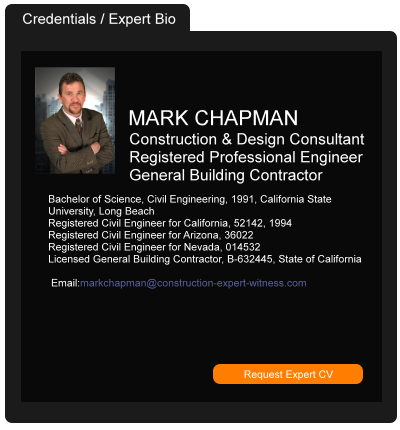Ohio Builders Right To Repair Current Law Summary:
Current Law Summary: According to HB 175, Chptr 1312, for a homebuilder to qualify for right to repair protection, the contractor must notify consumers (in writing) of NOR laws at the time of sale; The law stipulates written notice of defects required itemizing and describing and including documentation prepared by inspector. A contractor has 21 days to respond in writing.
Building Expert Contractors Licensing
Guidelines Columbus Ohio
Licensing is done at the local level. Licenses required for plumbing, electrical, HVAC, heating, and hydronics trades.
Association Directory
Local # 3654
12 W Main St
Newark, OH 43055
http://www.buckeyevalleybia.com
Columbus Ohio Building Expert 10/ 10
Building Industry Association of Central Ohio
Local # 3627
495 Executive Campus Drive
Westerville, OH 43082
http://www.biahomebuilders.com
Columbus Ohio Building Expert 10/ 10
Home Builders Association of Miami County
Local # 3682
1200 Archer Dr
Troy, OH 45373
http://HBAMiamiCounty.com
Columbus Ohio Building Expert 10/ 10
Ohio Home Builders Association (State)
Local # 3600
17 S High Street Ste 700
Columbus, OH 43215
http://www.ohiohba.com
Columbus Ohio Building Expert 10/ 10
Union County Chapter
Local # 3684
PO Box 525
Marysville, OH 43040
http://www.ucbia.com
Columbus Ohio Building Expert 10/ 10
Clark County Chapter
Local # 3673
PO Box 1047
Springfield, OH 45501
http://www.biacc.org/
Columbus Ohio Building Expert 10/ 10
Shelby County Builders Association
Local # 3670
PO Box 534
Sidney, OH 45365
http://www.shelbybuild.com
Columbus Ohio Building Expert 10/ 10
Building Expert News and Information
For Columbus Ohio
Drop in Civil Trials May Cause Problems for Construction Defect Cases
New York's De Blasio Unveils $41 Billion Plan for Affordable Housing
NY State Appellate Court Holds That Pollution Exclusions Bar Duty to Defend Under Liability Policies for Claims Alleging Exposure to PFAS
Ohio “property damage” caused by an “occurrence.”
Builder’s Be Wary of Insurance Policies that Provide No Coverage for Building: Mt. Hawley Ins. Co v. Creek Side at Parker HOA
Part of the Whole: Idaho District Court Holds Economic Loss Rule Bars Tort Claims Related to Water Supply Line that was Part of Home Purchase
Netflix Plans $900M Facility At Former New Jersey Army Base
Chambers USA 2023 Recognizes Six Partners and Three Practices at Lewis Brisbois
How Data Drives the Future of Design
Carbon Sequestration Can Combat Global Warming, Sometimes in Unexpected Ways
Insurers Dispute Sharing of Defense in Construction Defect Case
Latosha Ellis Selected for 2019 Leadership Council on Legal Diversity Pathfinder Program
Colorado Legislature Kills SB 20-138 – A Bill to Extend Colorado’s Statute of Repose
Digital Twins – Interview with Cristina Savian
House Panel Subpoenas VA Documents on Colorado Project
Contractors Should be Aware of Homeowner Duties When Invited to Perform Residential Work
Licensing Mistakes That Can Continue to Haunt You
California Supreme Court Rights the “Occurrence” Ship: Unintended Harm Resulting from Intentional Conduct Triggers Coverage Under Liability Insurance Policy
California Enacts New Claims Resolution Process for Public Works Projects
Happenings in and around the 2016 West Coast Casualty Seminar
Inspectors Hurry to Make Sure Welds Are Right before Bay Bridge Opening
The Association of Southern California Defense Counsel (ASCDC) and the Construction Defect Claims Managers Association (CDMA) Annual Construction Defect Seminar
The Most Expensive Travel Construction Flops
Harmon Towers Demolition Still Uncertain
Fifth Circuit Asks Texas Supreme Court to Clarify Construction Defect Decision
Undocumented Debris at Mississippi Port Sparks Legal Battle
Landmark Montana Supreme Court Decision Series: The Duty to Defend
Breaking The Ice: A Policyholder's Guide to Insurance Coverage for Texas Winter Storm Uri Claims
Former Hoboken, New Jersey Mayor Disbarred for Taking Bribes
California Supreme Court Shifts Gears on “Reverse CEQA”
EEOC Builds on Best Practice Guidance Regarding Harassment Within the Construction Industry
Catching Killer Clauses in Contract Negotiations
Hudson River PCB Cleanup Lands Back in Court
New York vs. Miami: The $50 Million Penthouse Battle From Zaha Hadid
Fungi, Wet Rot, Dry Rot and "Virus": One of These Things is Not Like the Other
Industry Standard and Sole Negligence Defenses Can’t Fix a Defect
Too Costly to Be Fair: Texas Appellate Court Finds the Arbitration Clause in a Residential Construction Contract Unenforceable
San Francisco Bucks U.S. Trend With Homeownership Gains
KB to Spend $43.2 Million on Florida Construction Defects
Defense Owed to Insured Subcontractor, but not to Additional Insured
The Vallagio HOA Appeals the Decision from the Colorado Court of Appeals
Statutory Time Limits for Construction Defects in Massachusetts
New Law Impacting Florida’s Statute of Repose
Temecula Office Secures Approval for Development of 972-Acre Community on Behalf of Pulte Homes
Insurer Must Defend Contractor Against Claims of Faulty Workmanship
Four Things Construction Professionals Need to Know About Asbestos
Environmental Roundup – April 2019
The Quiet War Between California’s Charter Cities and the State’s Prevailing Wage Law
An Additional Insured’s Reasonable Expectations may be Different from the Named Insured’s and Must be Considered to Determine whether the Additional Insured is Entitled to Defense from the Insurer of a Commercial Excess & Umbrella Liability Policy
Real Estate & Construction News Round-Up (03/08/23) – Updates on U.S. Mortgage Applications, the Inflation Reduction Act, and Multifamily Sector


































































